Irish Soda Bread is the ultimate quick bread to use as a side for soups, stews, and all sorts of meals. There’s no yeast so there’s no waiting. Just mix and bake! This traditional recipe delivers a crispy, golden crust with a soft, tender inside that’s just begging for a smear of butter.
Why Our Recipe
- Super easy, no yeast, and ready in under an hour. Just mix, shape, and bake!
- Crispy crust, soft inside which is perfect for slathering with butter.
- Keep it plain or add raisins and/or caraway for extra flavor.
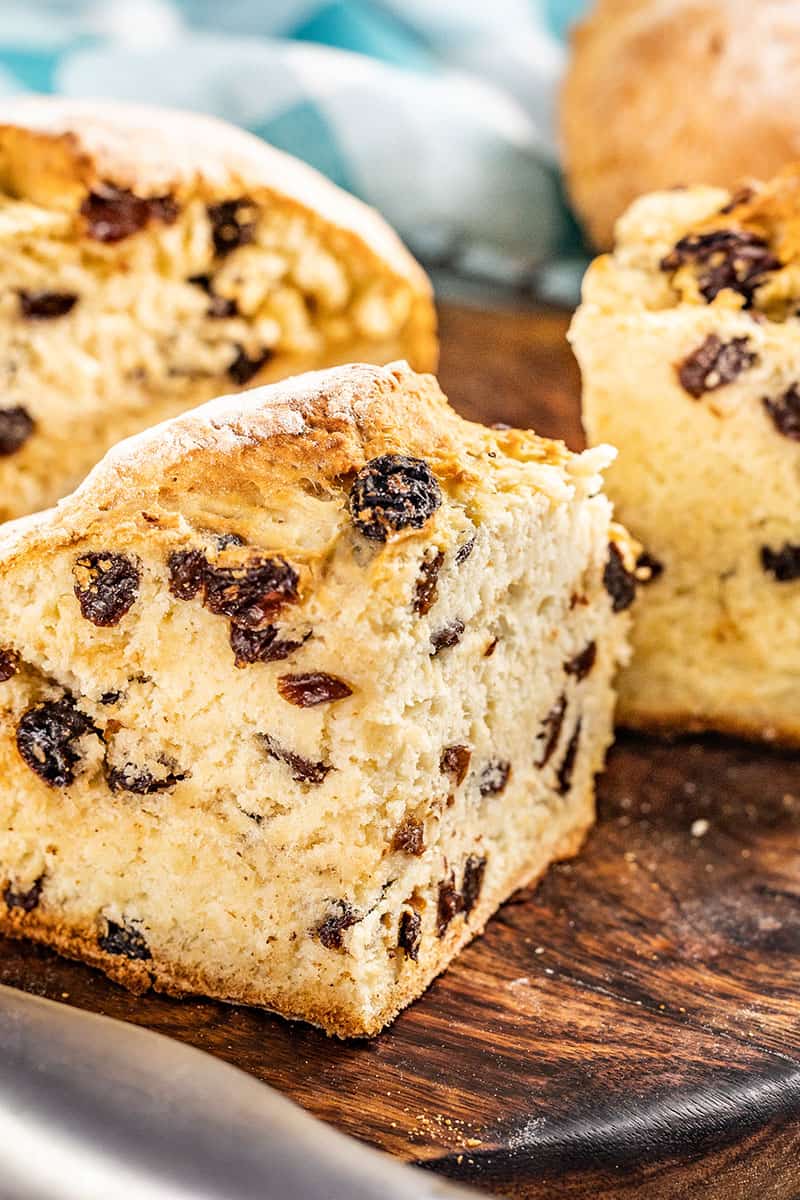
This bread is a go-to for me for a lot of reasons. It uses pantry staples I always have on hand and I can have warm, fresh bread on the table in under an hour. Adding raisins is traditional, and so is caraway, but you can always leave it plain. We particularly love this bread with caraway for extra flavor.
Ingredient Notes
- All-Purpose Flour: You start with 2 ½ cups and then add more as needed. Too much flour will make the bread dense, so add gradually.
- Salt: This bread is salty and savory. If you prefer less, you can reduce it to 1 teaspoon.
- Baking Soda: Make sure that baking soda is fresh because this is where the rise comes in without yeast.
- Buttermilk: If you don’t have buttermilk, mix 1 ½ cups milk with 1 ½ tablespoons lemon juice or vinegar and let it sit for 5 minutes.
- Raisins: Traditional in Irish soda bread! Use regular or golden raisins, or swap them for currants. Or leave them out entirely.
- Caraway Seeds: These add a slightly nutty, anise-like flavor which we love.
How Much Flour to Add
Flour amounts in bread recipes always vary a little because things like humidity and altitude can affect how much you’ll need. That’s why it’s best to start with the lower amount. In this case, we start with 2 ½ cups while you are still stirring, and add more flour while kneading.
The dough should be soft, slightly sticky, and easy to work with. If it’s too wet and sticks heavily to your hands or the counter, sprinkle in more flour a little at a time until it firms up. You want it tacky but not overly sticky. Be careful not to add too much, though! Extra flour can make the bread dense and dry.
Since Irish soda bread is a quick bread with no yeast, the dough will feel softer than traditional bread dough, and that’s okay. A little stickiness is normal, but it shouldn’t be dry or crumbly.
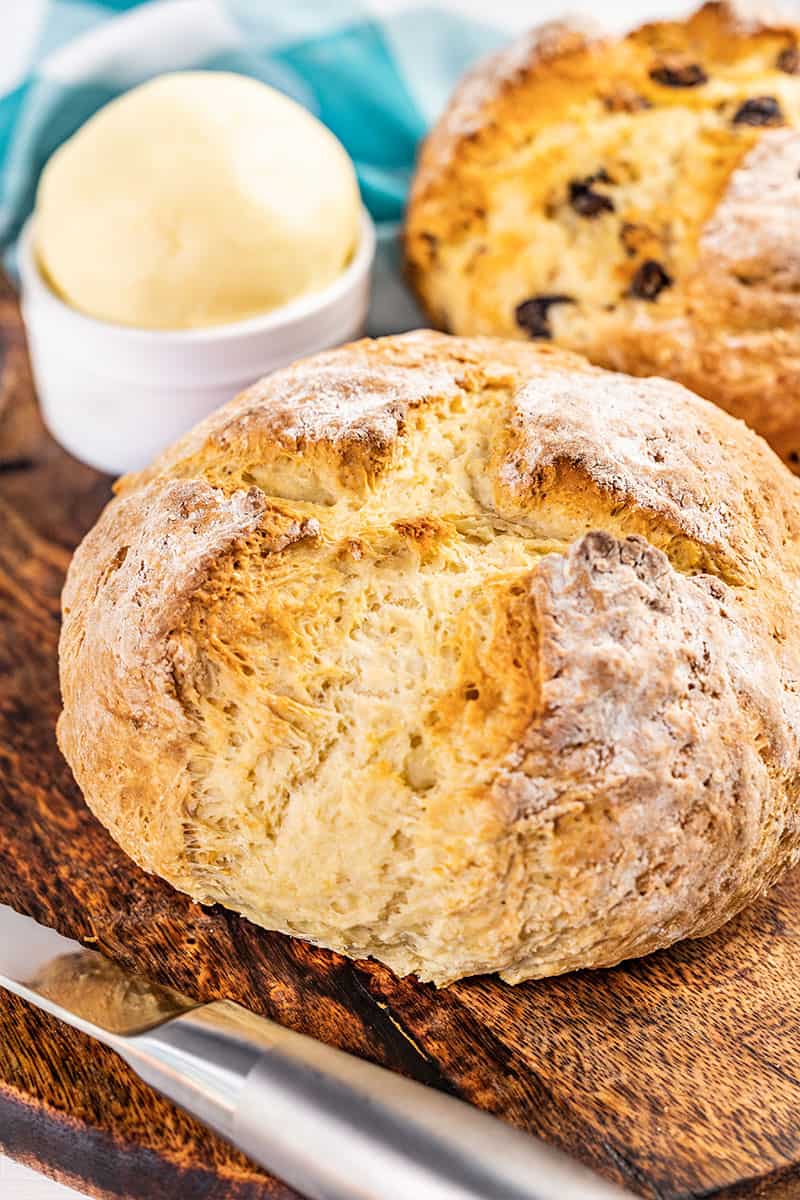
Raisins and Caraway: Optional
Raisins and caraway seeds are both traditional in Irish soda bread, but whether you add them is totally up to you! You can add both, just one, or skip them entirely—either way, this bread will turn out delicious!
Raisins add pops of sweetness that balances out the saltiness of the bread. Regular or golden raisins both work, or you can swap them for currants, which are slightly smaller and a little tangier. Not a fan of raisins? Feel free to leave them out.
Caraway Seeds bring a nutty, slightly anise-like flavor that gives the bread a more distinctive taste. They aren’t overpowering, but they do add noticeable flavor. If you’ve ever had rye bread, you’ll recognize the subtle hint of caraway. If you’re unsure, try adding just a little and see what you think!
What to Bake it On
You don’t need any fancy equipment to bake Irish soda bread, but different pans can change the crust and texture a bit.
Baking Sheet: The easiest and most common choice! A simple baking sheet lets the bread cook evenly and develop a crisp crust all around.
Cast-Iron Skillet: Want to go old-school? A cast-iron skillet holds heat really well, which helps create a beautifully golden, crisp crust—similar to how it was traditionally baked.
Dutch Oven: If you like a softer crust, baking in a Dutch oven with the lid on traps steam, which makes the bread extra tender. This mimics the Irish “bastible” method.
Storage Instructions
Irish soda bread is best enjoyed fresh. Store leftovers at room temperature in an airtight container, plastic bag, or wrapped tightly in plastic wrap. It will stay fresh for 2 to 3 days.
More easy bread recipes…
Flaky Old Fashioned Biscuits
25 mins
The Best Homemade Dinner Rolls Ever!
3 hrs 12 mins
Homemade Breadsticks
1 hr 18 mins
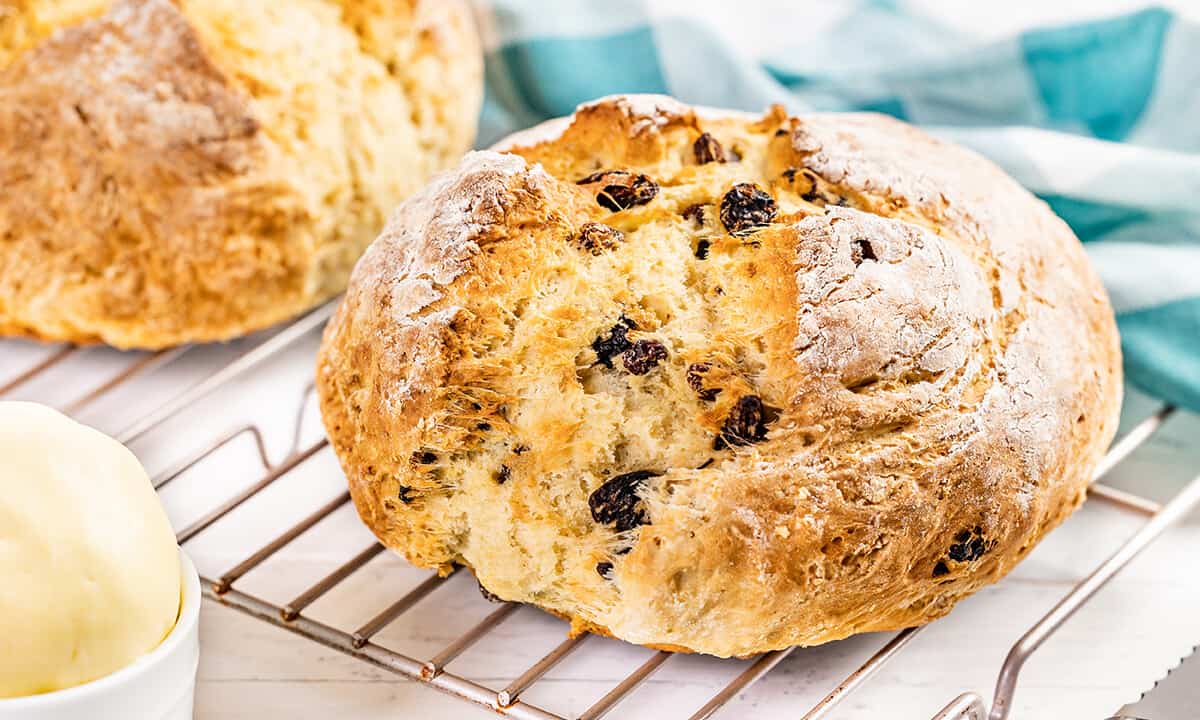
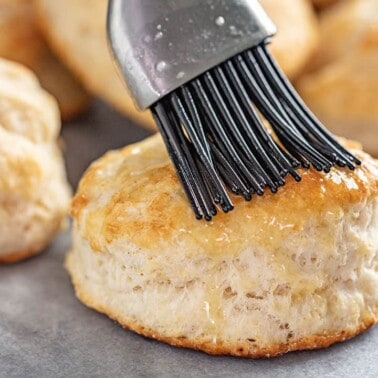

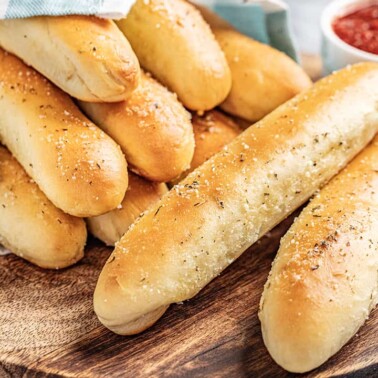
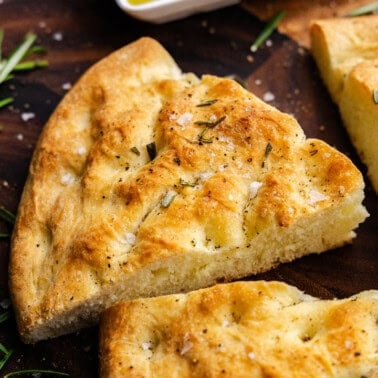
This was an easy and delicious recipe. It felt like I was channeling my grandmother. Thank you
So good and so easy to make. It didn’t last long in my house.
Where is the butter or shortening? nutmeg? no flavorings at all??
Nothing more than the 4 ingredients. The Irish started using this recipe during the potato famine. Ingredients needed for yeast bread were not available or were cost prohibitive. Give the basic recipe a try then try adding dried fruit or flavouring.
This is traditional Irish soda bread just as my mum made for us as kids
I am making this right now! Just put it in the oven. So excited to see how it comes out!!!
Thank you for your wonderful recipes!
I have tried many soda bread recipes over the years and none turned out as well as yours did! Thank you so much for sharing such a classic traditional recipe.
well…i will be attempting thus bread today…Ive looked at a few other recipes but they all produce breads that appear to be drier or atleast from the look of the crumb? There are even recipes which INSIST on using cold butter which u have to cut into the dough.
i will be serving this bread with corned beef and cabbage so i will let you know how well it turns out! thank you!
What time is Dinner???
The receipe I use is probably 100 years old, if not older. It involves using a cast iron skillet greased with butter, lining the bottom with a piece of waxed paper, butter, caraway seed, currants, some sugar (I use brown sugar), baking soda and baking powder, much less salt, and dotting the top with butter before baking. Also, the oven time is easily 1 hour and judged by acheiving an even deep golden brown over the top.
Wax paper in a 425 degree oven for an hour .? Really? It would melt and burn . I hope no one tries that. Do you mean parchment paper ? Also , check your oven, this only takes 35 minutes . It doesn’t sound like you even made this recipe , you made your own.
Too much salt! I use 1 tsp. Have been making it for years.
I made this bread for a second time tonight and followed the instructions carefully but unfortunately both times the bread was slightly raw on the inside. What could I be doing wrong?
If you preheated your oven to the correct temperature and cooked it for the right amount of time (and you didn’t make any other changes to the recipe), it’s always possible your oven runs on the cooler side and it may just need a longer baking time.
Mine needed 40 plus minutes and my oven seems to be quite accurate (other recipes work as directed). I have another soda bread recipe which calls for 375 degrees for 45 minutes. Bake time and temp are not exact – think of how it used to be done!
I also cut the bread down almost to the pan when making my cross, rather than just an inch deep – how I saw it done by Paul on the British baking show. That may allow more heat to get through.
Made this with the exception of only adding a tsp. of the sea salt. This turned out beautiful and delicious. Thank you so much for this recipe, definitely will be using often to accompany many dinners.
Made this as written. We did nto like this. It was SALTY! That was all you could taste.
This is extremely dense as well, like soda bread should be, but it should not be a salt lick.
Did you add 1 tablespoon or 2 1/4 teaspoons? And was it sea salt or table salt. 1 tablespoon of table salt would have yielded a salty bread.
For dessert for St. Patrick’s day, I add raisins soaked in Irish Whiskey. I put the raisins in a small covered jar in the refrigerator for a week. I add the raisins at the same time I add the buttermilk. I also add 1/2 cup of brown sugar. The leftover whiskey can be made into whiskey butter which can be spread on the soda bread. For best results, use unsalted butter for the whiskey butter.
This sounds like the best idea I’ve ever heard!